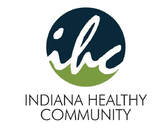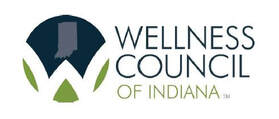CHRONIC DISEASE EDUCATION
How to use Guide:
To view information about a health topic of interest, click on the relevant tab.
To view information within the topic, click on the words next to the bullet points.
To view information about a health topic of interest, click on the relevant tab.
To view information within the topic, click on the words next to the bullet points.
Asthma Health Education
Asthma Health Education Community Tools A written asthma action plan encourages self-management of asthma. View this template to get started on making your asthma action plan. Plan de tratamiento contra el asma. This brochure offers tips on how to manage asthma and follow simple steps to minimize exposure to asthma triggers found indoors and out. Este folleto le ofrece consejos sobre cómo manejar el asma, tales como pasos sencillos a seguir para minimizar su exposición a provocadores de asma encontrados en los interiores y al aire libre. This brochure offers actions you can take to help manage your child's asthma and prevent attacks before they happen. Learn how managing your child's indoor environment is an important step in reducing exposure to the things that can trigger asthma attacks. Asthma triggers are things that can cause asthma symptoms, an episode or attack or make asthma worse. The infographics in this document provide a brief overview of different kinds of triggers and ways you can reduce your exposure. Los desencadenantes del asma son cosas que pueden provocar síntomas de asma, un episodio o un ataque; o empeorar el asma. La infografía de este documento ofrece un breve resumen de los diferentes tipos de desencadenantes y de las formas en que puede reducir su exposición a los mismos. This educational activity book helps children learn more about asthma triggers. EPA Publication Number 402-F-04-008, Published February 2004. Este cuaderno de actividades ayuda a los niños a aprender más sobre los provocadores de asma.
National Asthma Health Agencies
Centers for Disease Control and Prevention (CDC)
- The Basics of Asthma (NIH)
- Asthma Triggers
- Asthma in Communities & Schools
- Asthma CDC Resources
- Indoor Air Quality
- Acerca del asma
- Calidad del aire interior en las escuelas
Asthma Health Education Community Tools A written asthma action plan encourages self-management of asthma. View this template to get started on making your asthma action plan. Plan de tratamiento contra el asma. This brochure offers tips on how to manage asthma and follow simple steps to minimize exposure to asthma triggers found indoors and out. Este folleto le ofrece consejos sobre cómo manejar el asma, tales como pasos sencillos a seguir para minimizar su exposición a provocadores de asma encontrados en los interiores y al aire libre. This brochure offers actions you can take to help manage your child's asthma and prevent attacks before they happen. Learn how managing your child's indoor environment is an important step in reducing exposure to the things that can trigger asthma attacks. Asthma triggers are things that can cause asthma symptoms, an episode or attack or make asthma worse. The infographics in this document provide a brief overview of different kinds of triggers and ways you can reduce your exposure. Los desencadenantes del asma son cosas que pueden provocar síntomas de asma, un episodio o un ataque; o empeorar el asma. La infografía de este documento ofrece un breve resumen de los diferentes tipos de desencadenantes y de las formas en que puede reducir su exposición a los mismos. This educational activity book helps children learn more about asthma triggers. EPA Publication Number 402-F-04-008, Published February 2004. Este cuaderno de actividades ayuda a los niños a aprender más sobre los provocadores de asma.
National Asthma Health Agencies
Centers for Disease Control and Prevention (CDC)
- Asthma and Community Health Branch - This branch leads CDC's fight against environmental-related respiratory illnesses (including asthma) and studies indoor and outdoor air pollution, as well as supports the National Asthma Control Program.
- Division of Adolescent and School Health - This division of CDC oversees surveillance methods and provides funding support to states, tribes and NGOs to address asthma and other health concerns.
- National Asthma Control Program - The initiative is a multi-component, mobilizing and action-oriented effort to engage diverse stakeholders who are concerned about or involved in improving asthma control. Its ultimate aim is to bring the asthma care that patients receive in line with evidence-based recommendations.
- National Heart, Lung and Blood Institute - The National Asthma Education and Prevention Program has the goal is to enhance the quality of life for patients with asthma and decrease asthma-related morbidity and mortality.
- National Institute of Environmental Health Sciences (NIEHS) - NIEHS plays a pivotal role in funding research on children's health. The Institute partners with EPA to support thirteen research centers devoted exclusively to children's environmental health and disease prevention. These centers focus on the important role that the environment has on a host of childhood illnesses, including asthma.
- Centers for Children's Environmental Health & Disease Prevention Research - These NIEHS centers, located across the country, examine the effect of environmental exposures on children's health.
- Allergy and Asthma Networks (AAN)
- American Respiratory Care Foundation (ARCF)
- American Academy of Allergy, Asthma and Immunology (AAAAI)
- America's Health Insurance Plans (AHIP)
- American Academy of Pediatrics (AAP)
- Association of Clinicians for the Underserved
- American Association for Respiratory Care (AARC)
- Asthma Community Network
- Asthma and Allergy Foundation of America (AAFA)
- American College of Allergy, Asthma and Immunology (ACAAI)
- Boston Public Health Commission (BPHC)
- American College of CHEST Physicians (CHEST)
- American College of Preventive Medicine (ACPM)
- National Association of School Nurses (NASN)
- American Lung Association (ALA)
- American Medical Association (AMA)
- National Environmental Education Foundation (NEEF)
|
*Click on a topic to learn more about it.
Diabetes Health Education General Information about Diabetes
Diabetes Health Education Community Tools This step by step handout is a great tool for learning more about prediabetes and how you can take steps and make a plan to prevent getting diabetes. This infographic contains statistics and information about the danger of type 2 diabetes. Gestational diabetes is diabetes that a woman can develop during pregnancy. This handout contains information on gestational diabetes and what you can do to manage it and stay healthy. This pamphlet contains information on how to pick healthy food options, as well as some recipes that are great for managing diabetes. This infographic contains tips on different ways to stay active with diabetes. National Diabetes Organizations |
Obesity Health Education
General
Diabetes Health Education Community Tools:
FDA Nutrition Facts Label
USDA’s Dietary Guidelines for Americans
USDA’s MyPlate
HHS Physical Activity Guidelines for Americans
HHS Move Your Way Campaign
Diabetes Organizations
Associations
Centers for Disease Control and Prevention (CDC)
National Institutes of Health
U.S. Department of Agriculture
U.S. Department of Health and Human Services
U.S. Food & Drug Administration
General
- General Obesity (CDC)
- General Obesity (CDC)
- Watch Your Weight (ODPHP)
- Helping a Loved One (ODPHP)
- Adult BMI Calculator (CDC)
- Prevention (CDC)
- Weight Management & Healthy Living Tips (NIDDK)
- Healthy Eating for a Healthy Weight (CDC)
- Dietary Guidelines for Americans (USDA/HHS)
- Healthy Eating on a Budget (USDA)
- MyPlate Food Groups (USDA)
- New Nutrition Facts Label (FDA) SPANISH
- General Health Effects (CDC)
- Obesity and Cancer (CDC)
- Diabetes (ADA)
- Heart Disease (CDC)
- BAM! Body and Mind (CDC)
- Nutrition Label Youth Outreach (FDA)
- Disability and Obesity (CDC)
Diabetes Health Education Community Tools:
FDA Nutrition Facts Label
USDA’s Dietary Guidelines for Americans
USDA’s MyPlate
HHS Physical Activity Guidelines for Americans
HHS Move Your Way Campaign
- Kids – Fact Sheet
- Kids - “60 Minutes” Poster
- Adults - Fact Sheet
- Adults - “Feel Better” Poster
- Adults - “Dance Moves” Poster
- Older Adults - Fact Sheet
- Older Adults - Types of Activity Fact Sheet
- Older Adults - “One Step at a Time” Poster
- During & After Pregnancy – Pregnancy Fact Sheet
- During & After Pregnancy – Postpartum Fact Sheet
- During & After Pregnancy – “One Step at a Time” Poster
- During & After Pregnancy – “Start Slow” Poster
- Parents – Fact Sheet
- Parents – Sports Fact Sheet
- Parents – “Keep Up with My Kid” Poster
- Parents – “Focus on Fun” Poster
- Parents – “Find Your Own Way to Play” Poster
- Parents – “More Than Just a Workout” Poster
- Professionals – Fact Sheet for Health Care Providers
- Professionals – Fact Sheet for Maternal Health Care Providers
Diabetes Organizations
Associations
- American Diabetes Association is a network of more than 565,000 volunteers, their families and caregivers, a professional society of nearly 20,000 health care professionals, as well as more than 250 staff members.
Centers for Disease Control and Prevention (CDC)
- Division of Nutrition, Physical Activity, and Obesity leads US public health efforts to prevent chronic diseases by promoting good nutrition, regular physical activity, and a healthy weight. We work in places where people live, learn, work, and play.
- Healthy Schools works with states, school systems, communities, and national partners to prevent chronic disease and promote the health and well-being of children and adolescents in schools.
National Institutes of Health
- National Institute of Diabetes and Digestive and Kidney Diseases provides information on topics such as staying active at any size, binge eating disorder, a guide for teens, food portions, and bariatric surgery for severe obesity.
U.S. Department of Agriculture
- Dietary Guidelines for Americans provides advice on what to eat and drink to meet nutrient needs, promote health, and prevent disease. It is developed and written for a professional audience, including policymakers, healthcare providers, nutrition educators, and Federal nutrition program operators. The U.S. Departments of Agriculture (USDA) and Health and Human Services (HHS) work together to update and release the Dietary Guidelines for Americans (Dietary Guidelines) every five years. Each edition of the Dietary Guidelines reflects the current body of nutrition science. The Dietary Guidelines for Americans, 2020-2025 is the current edition.
- MyPlate is based on the 2020-2025 Dietary Guidelines for Americans.
U.S. Department of Health and Human Services
- Office of Disease Prevention and Health Promotion encourages all Americans to lead healthy and active lives. We accomplish this by establishing and promoting national public health priorities, translating science into policy, guidance, and tools, and working to improve health literacy and equitable access to clear and actionable health information.
U.S. Food & Drug Administration
- The FDA is responsible for protecting the public health by ensuring the safety, efficacy, and security of human and veterinary drugs, biological products, and medical devices; and by ensuring the safety of our nation's food supply, cosmetics, and products that emit radiation.


